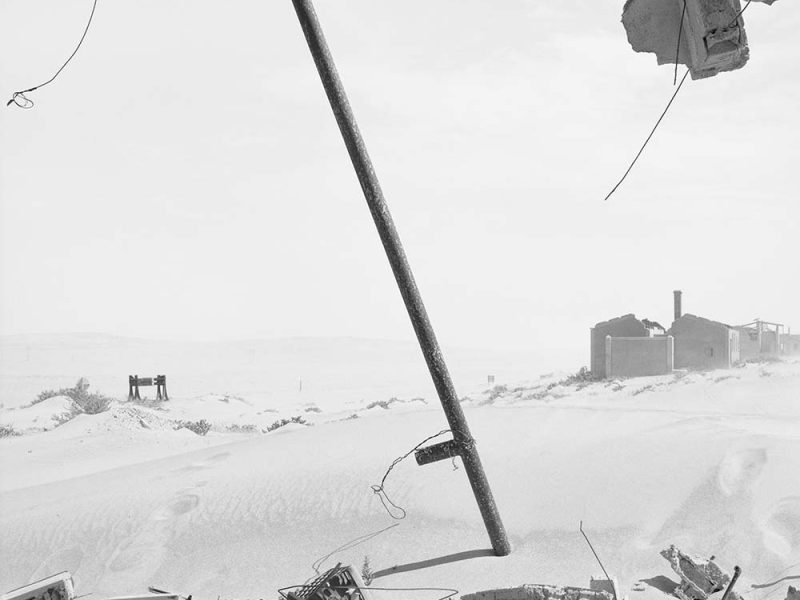Christopher Littlewood
Project Description
Post-colonial Southern Africa is a place that enacts a continuous tension between its architectural constructions, its natural surroundings and the weight of racist historical ideologies. Through memorials, monuments, sites of cultural significance and other commemorative topologies, these photographs ruminate on these tensions within a contemporary Namibian context. Where in the drylands of this sparsely populated region, heritage sites are rendered indistinct by the shifting tides of dust and sandstorms.
Forming a subset within the broader Through Monuments project (2019-ongoing), which expands to include the entangled histories of South Africa, Namibia and Zimbabwe, the work explores how collective memory is expressed through overlapping material cultures. This chapter focuses on the railway lines that serviced diamond mining towns and military outposts, together with the area known as the Skeleton Coast, where shipwrecks, defunct oil rigs and other ruins lie strewn across the Namib Desert.
Sculptural interventions aim to disrupt a traditional documentary narrative-based sequence. Improvised and playful, these assemblages are simple exercises where found artefacts are underpropped, leaned against or hung. They evolved from the notion that memorialised heritage is undergoing a process of being redressed and transformed. Though humble on the surface, these artefacts are as inextricably linked to the material culture of European extractivism in Africa as any building or structure. Perhaps as the importance of intangible heritage and oral histories challenge the role of monuments, it allows for physical structures and objects to undergo a process of being questioned, where material properties and design are potential subjects for artistic re-interpretation.
In the words of James Baldwin, “As we consider what role monuments play in our culture, it’s the historical context, not the mythology, that we must remember.” In that spirit, Through Monuments is not grouped following any chronological narrative. Instead, the photographs are sequenced according to the aesthetics of built form, material texture and decorative motif. Thereby encouraging the reading of monuments – not in terms of the events or personalities they purport to represent – but rather as a set of languages that reflect the context from which they emerged.
Bio
Christopher Littlewood (b.1981) is a photographic artist based in Johannesburg, South Africa. Through the built environment, material cultures and other architectural interests, his work focuses on Southern and Eastern Africa, where he has been photographing since 2009. Examples of work include Swahili Morphology, a body of photographic and sculptural work produced at Saba Artist Residency in Kenya, which explores the ever-changing and always incomplete nature of the Swahili townscape; Dwelling in Madagascar, produced as an embedded artist within the Architectural Association Visiting School’s Unknown Fields Division, portrays the everyday spaces of those living alongside the country’s most exploited landscapes; Organised Island, produced on the former slave-trading islands of northern Mozambique, looks at the relationship between post-colonial infrastructure and vernacular building traditions.
Recognised in the UK as a professional curator, Christopher worked at Flowers Gallery between 2008 – 2018. There he ran the photography department, going on to curate over sixty photography exhibitions and developing a vision for a wider programme, including mentorships and a project space. A sentiment he has carried forward to his role as Visual Cultures Trainer at the Market Photo Workshop in Johannesburg. As a writer, Christopher’s texts have appeared in a variety of publications including artists’ books, magazines and career retrospectives.
Honourable Mention
Series Title
Through Monuments (Namibia)
Website
Category
Hariban Award 2023

